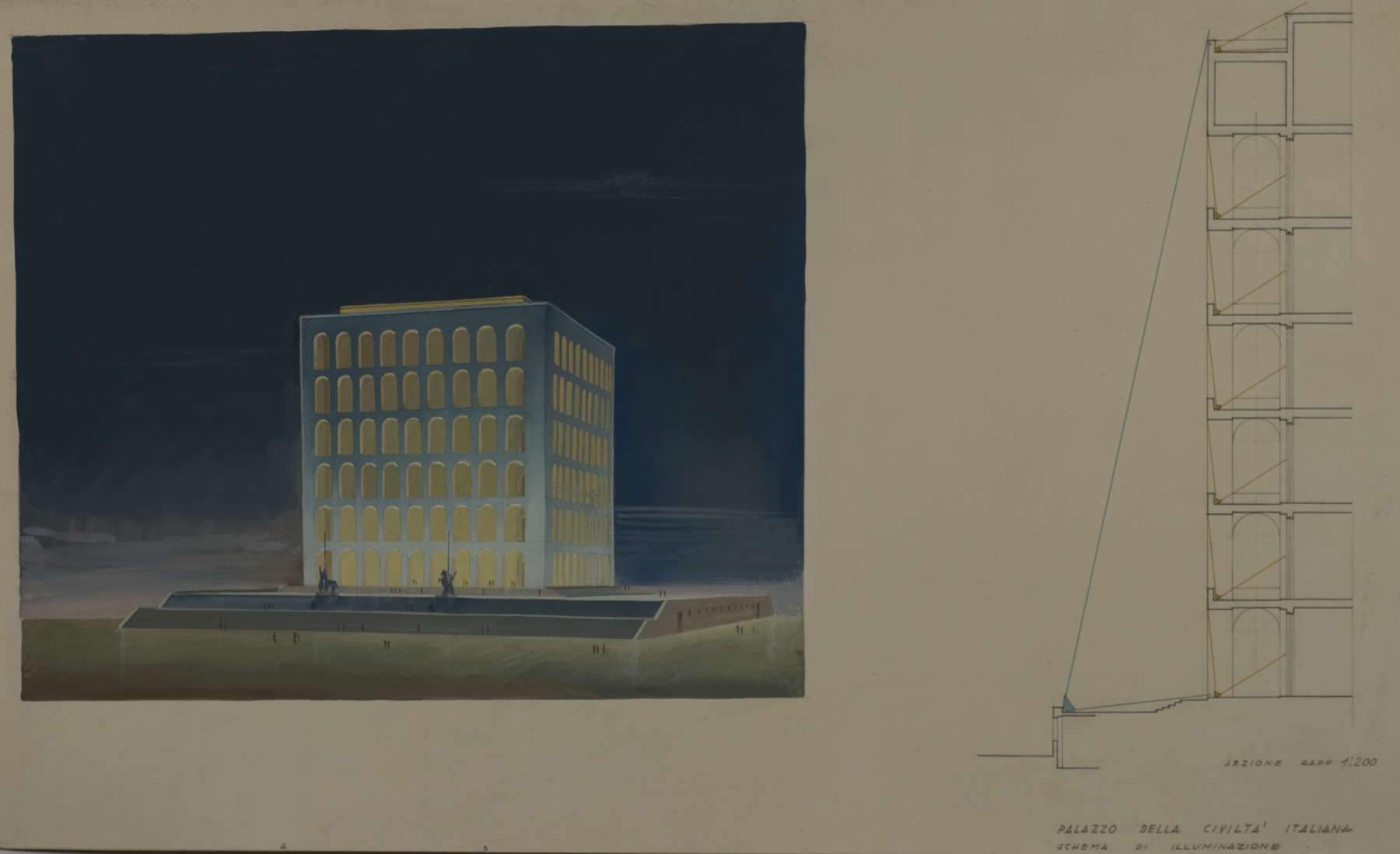Exhibition on the origins of the modern city in the 20th century opens at Miart in Milan
From April 12 to April 21, 2024 on the occasion of Miart and Fuorisalone 2024, the Cirulli Foundation opens in Milan the exhibition The Birth of the Modern City: from Antonio Sant’Elia to Ludovico Quaroni Selection from the Cirulli Foundation Collection in the spaces of Galleria Antonia Jannone Disegni di Architettura.
The exhibition offers an interpretation of the architectural and urban imaginary in Italian culture in the first half of the last century, recovering the most significant proposals from architecture and the figurative arts. The modern city of railway stations and airports, foundries, factory chimneys, gasometers and suburbs draws and fixes the new urban face of the 20th century. It is also a tribute to artist Gino Sarfatti, an important figure in the history of Italian industrial design who founded Arteluce in Milan in 1939, where he devoted himself to researching innovative solutions in materials and production techniques with great attention to the light-space relationship. In fact, a cameo is dedicated to the 1940s production of Arteluce the company founded by Gino Sarfatti in 1939. In the wake of the futurist revolution of the first decade of the twentieth century, Italian rationalist architects sought to concretely construct the “future-present” by trying to respond to the new needs imposed by modernity.
Cities thus became laboratories for experimenting with new urban planning and architectural languages where concrete, iron and glass fulfilled the dual task of functionality and beauty. The “rediscovery” of the fifteenth century, in fact, serves the twentieth-century builders to refound the foundations of modernity on roots that are rooted in the humus of the glorious Italian tradition. In this climate of “Return to order,” to “good craft” also fit the most important architects of the time working on the largest national urban construction sites. Among them, a particular case in point is EUR (E42), the neighborhood-city to the west of Rome within which the new international language of Rationalism integrates and blends with ancient Roman architecture. The smooth white facades of the buildings, the squared pillars and round arches, the large exedras and the wide open spaces crossed by long “imperial” avenues of classical inspiration, in fact, are for our architects lofty examples of those same ideals of functionality, hygiene and productivity advocated by the foreign masters of Rationalism for the design and realization of the “modern city.”
Image: Giovanni Guerrini, Rome World’s Fair 1942, Palace of Italian Civilization, Lighting scheme (1940; pencil and colored pastels on drawing paper, 40 x 63 cm)
 |
| Exhibition on the origins of the modern city in the 20th century opens at Miart in Milan |
Warning: the translation into English of the original Italian article was created using automatic tools. We undertake to review all articles, but we do not guarantee the total absence of inaccuracies in the translation due to the program. You can find the original by clicking on the ITA button. If you find any mistake,please contact us.




























